Recruiting an outstanding individual is just the start of creating an effective nonprofit board member and a well-functioning Board of Directors.
Nature versus nurture: It’s an age-old argument in psychology – and in board development for nonprofit organizations. The importance of recruiting the best board members is widely recognized and written about, and rightly so. In reality, however, the recruitment of outstanding individuals is
just the start of creating an effective nonprofit board member and a well-functioning Board of Directors. Nurturing a new board member can be just as important as recruiting for their natural talents.
A common assumption among nonprofit organizations and their boards is that new board members – especially those who have received some form of board-orientation training – arrive fully prepared to be effective, contributing directors. But boards, and board cultures, are layered with history, tradition, protocol, personalities, and even eccentricities.
“I spent two years of my first three-year board term just trying to figure out what was going on,” a renewed board member once confided to me when discussing ways to bring new directors onto the organization’s board more effectively.
Becoming an effective nonprofit board member requires more than the prerequisites of passion for the organization and its mission, understanding of the board’s role, and the ability to bring resources and relationships to the organization. An effective board member also needs in-depth knowledge of the board’s unique culture and inner-workings, including a keen awareness of the subtext in board discussions and key board members’ individual work styles and preferences.
As a new board member, is it wise to speak up right away or sit back and watch for a while? How does the board chair like to be addressed? What discussion topics carry a special need for sensitivity? What unspoken “rules” are best not broken?
Gaining this kind of deep and nuanced understanding of a board typically occurs in one of two ways: through time and experience, or, more expeditiously, through mentoring. Hands down, I recommend mentoring over the school of hard knocks every time.
While mentoring a new board member requires thoughtful effort on the part of the organization’s leadership combined with commitment from experienced members of the board, the benefits – in the form of more effective and cohesive decision-making – almost always outweigh the investment.
Several years ago, when I was researching curriculum for the Institute for New Board Members, a training program of the Council on Foundations, I interviewed board members and CEOs from philanthropic foundations across the U.S. and Canada. A standard question in the interview was “What could your foundation have done to support you more effectively as a newly-appointed member?” Again and again the answer came back: “I wish I had had a mentor.” Some said it plainly: “I wish I had someone I could ask dumb questions without being embarrassed.” Others reflected their desire to become board insiders more quickly, to understand context so they could move more smoothly into decision-making, or to better understand the subtleties of power and influence around them in the board room.
While many, but not all, nonprofit organizations offer some form of new board member orientation training – conveying important and valuable information – such training simply cannot provide the human interaction and insight available through mentoring.
As an example of this, the nonprofit where I once managed board services had a robust board orientation presentation. However, it did not include insights into how the board meetings really worked, how the meetings flowed, the politics of personal interaction, and the particular etiquette inherent to the board culture. These points needed to be conveyed in other ways.
Recognizing this, I tried an experiment at this organization. I asked an experienced board member to mentor a newly-appointed member. Mentorship, I explained, meant maximizing social opportunities with the new member – maybe coffee or lunch monthly – to discuss the organization. It meant sitting next to the new member in meetings, slipping a helpful note to the new member when needed, and ensuring that the new member had opportunities to interact with, and learn from, other experienced members of the board.
Not only did the new board member transition into active board engagement remarkably quickly, a year after the mentorship began, the now-experienced mentor approached me with a smile. “I think I have become a better board member myself through this process,” she said. When I asked why, she replied “I had to think deeply about the organization in order to explain it. I guess it is true – you do learn something best by teaching it!”
To learn more about The Phoenix Philanthropy Group and our board development expertise and services, please visit phoenixphilanthropy.com.
Deborah Whitehurst is Senior Consultant of The Phoenix Philanthropy Group.
